How to Blind Bake Pie Crust
Here’s my fool-proof method and best tips for how to blind bake (or par-bake) pie crust. No shrinking guaranteed and no fancy tools required!
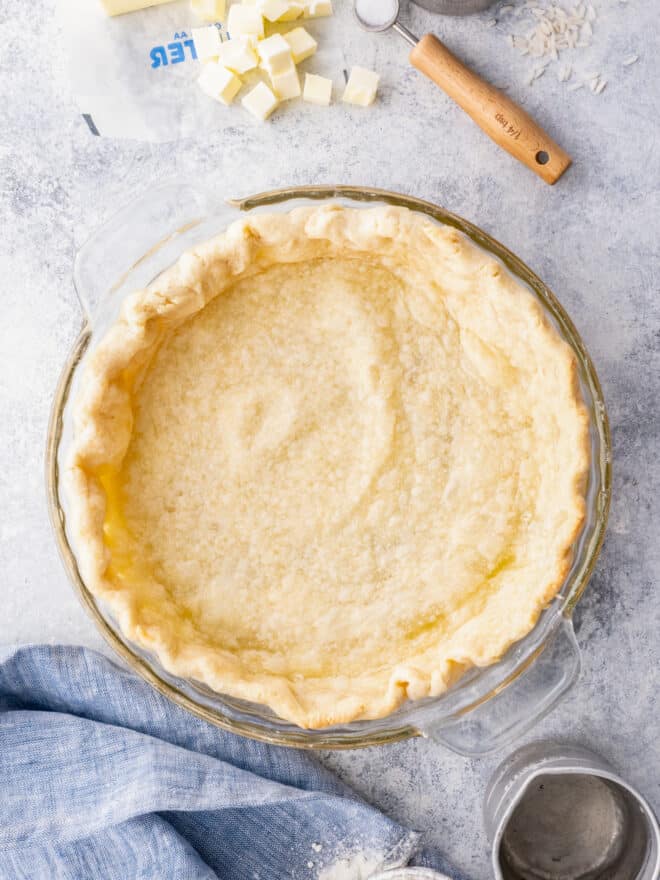
Over the years I’ve had my fair share of baking fails of all kinds, but nothing is nearly as upsetting as a shrunken, slumped pie crust. All that effort wasted!
In the early days when I started my baking hobby, I followed so many blind-baking pie crust tutorials from other bakers that, honestly, didn’t work. Through my own trial and error, I’ve landed on this guaranteed method for success.
Follow my steps, and tips and tricks, and I guarantee you’ll have success too!
What does “blind bake” mean?
Blind baking (or par-baking) means that you bake the pie crust on it’s own, without a filling. This is for pies with a single bottom crust only (no top crust). You can full blind bake the pie crust, meaning the crust is completely baked, for a pie with a no-bake filling. Examples of pies that use a completely baked crust are any kind of cream pie and French silk pie.
You can also partial blind bake the pie crust for pies with a runny filling, in order to prevent a soggy bottom. The crust is baked partially, then once the filling is added it’s returned to the oven to finish baking. Pies that may use this method are custard pies, pumpkin pie, pecan pie, lemon meringue pie and quiche.
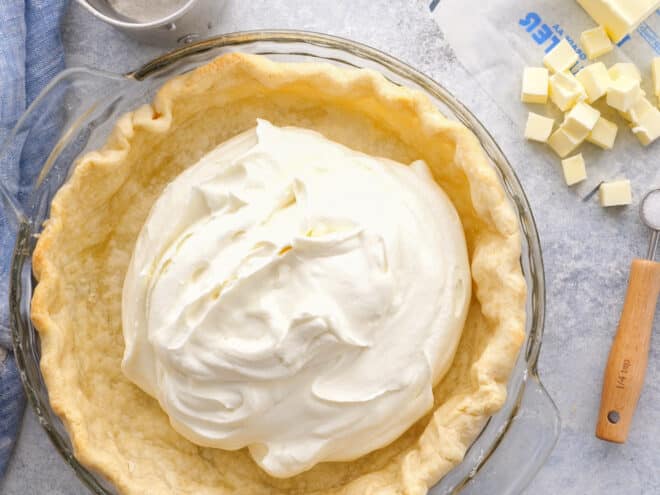
How to blind bake pie crust
Blind baking is quite simple if you follow all 4 of these easy steps (we’ll go more into each of these steps below):
- Prepare pie dough. Use your favorite pie crust recipe!
- Freeze. Freezing the pie crust helps it hold its shape during baking.
- Add baking weights. Weights hold the sides of the pie crust up as it bakes, preventing shrinking and slumping.
- Bake. Baking the crust for long enough ensures it’s completely set in its shape.
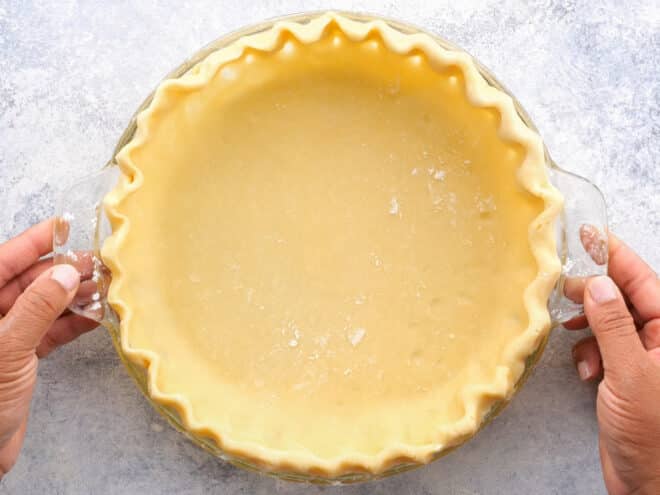
Step 1: Prepare pie crust
You can use whatever pie crust recipe you prefer, but I highly recommend you check out my go-to flaky pie crust recipe (with photos and tips!) and my favorite buttermilk pie crust variation. You can also quickly make pie crust in a food processor!
Roll pie crust out on a lightly floured surface, transfer it to a pie dish or pie plate, and crimp edges as desired.
Step 2: Freeze pie crust for 30 minutes
Once your pie crust is ready to go, place it in the freezer for at least 30 minutes. Freezing the crust prevents the butter from melting too quickly in the oven, which helps the crust keep its shape.
You can also freeze the pie crust in the pie dish for up to 1 month, just make sure it is tightly double-wrapped with plastic wrap. (This is a great make-ahead option!)
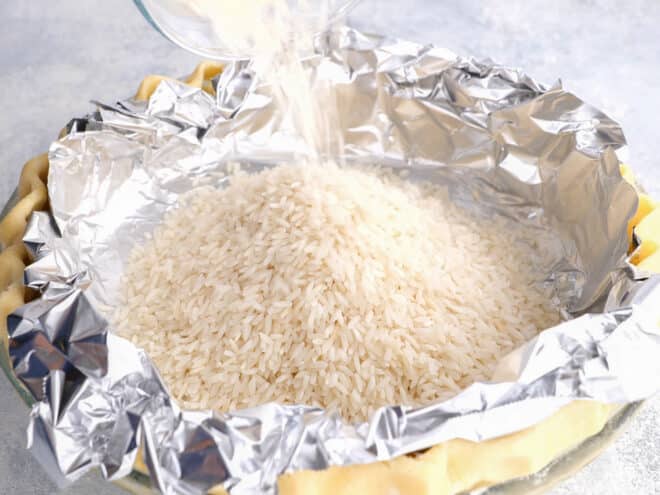
Step 3: Fill with Pie Weights
If you don’t fill the crust with pie weights, there’s nothing to hold the shape of the pie crust as it bakes, and it will shrink or turn out misshapen. Don’t skip the pie weights! You can buy pie weights made specifically for this purpose, but you can also easily use dried rice or beans (my preference, they’re both cheap and easy to find!)
Grease a sheet of aluminum foil with butter or non-stick cooking spray and press it into the frozen pie crust so that it’s flush with the crust and covers the crimped edges. Use more than one sheet of foil if needed to cover all of the crust. (A note about using parchment paper: it causes wrinkles and folds in order to fit the pie pan, and still doesn’t fit flush with the crust. Foil, however, will mold to it it completely and is the best bet for success.)
Next, fill the foil-lined crust all the way to the top with your pie weights. Filling the weights to the top of the crust, ensures the crust doesn’t have anywhere to go during baking. If you only fill the crust partially, it may shrink or slip down to that point.
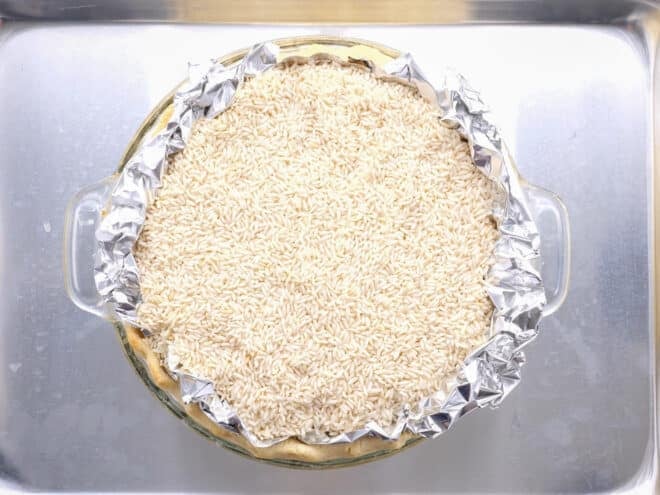
Step 4: Bake pie crust, fully or partially
Place prepared crust on a baking sheet pan and bake at 425°F for about 20-25 minutes. The edges of the crust should appear completely baked and have just started to turn golden brown.
(Many tutorials I’ve read only say to bake the crust for 10-15 minutes, but in my experience that’s not nearly long enough. If you bake it for too short of a time, the sides of the crust may not be set and the crust could still shrink or slump down when you take out the weights.)
After this first bake, use the edges of the foil to lift the weights out of the pie. If you only need a partially baked crust, you can add your filling mixture and bake the pie according to the recipe instructions. If you need a fully baked crust for a no-bake filling, dock the bottom of the pie crust with a fork to prevent it from puffing up and bake the crust for 5-10 minutes more until the bottom of the crust is set and dry.
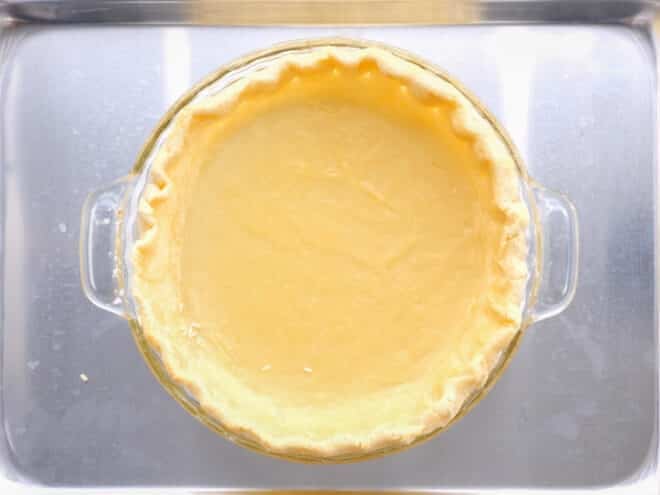
More tips for blind baking a pie crust
- You’ll probably only need a single pie crust, but my recipe makes 2 pie crusts. Store the second pie crust in the fridge for up to 3 days or in the freezer for up to 3 months or more.
- You can use store-bought crust instead of homemade pie crust if you prefer. While homemade pie crust will have superior flavor, store-bought crust may hold its shape better during blind baking.
- Dried rice and beans can be used over and over again as pie weights. Let them cool completely, then store in an airtight container. I’ve used the same rice for years!
- If you want a golden shiny crust, brush the edges with an egg wash made of 1 whisked egg + 1 Tbsp water before baking.
- If the bottom of the crust puffs up after its second baking, simply push it back down with the back of a spoon.
- A completely baked pie crust can be stored at room temperature for up to 3 days, or in the freezer for up to 1 month.
More pie baking resources
- Best Tips for Perfect Pies Every Time
- My Favorite Pie Tools
- The Best Flaky Pie Crust
- How to Make Pie Crust in the Food Processor
Pie recipes that need a blind baked crust
- Classic Pumpkin Pie
- Chocolate-Bottom Banana Cream Pie
- Pumpkin Pie with Nut Praline
- Asparagus and Bacon Quiche with Cream Cheese
Shop Pie Tools
This tutorial was originally published November 2016.
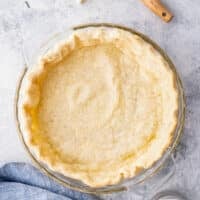
How to Blind Bake Pie Crust
Ingredients
Instructions
- Roll pie crust out on a lightly floured surface, transfer it to a pie dish, and crimp edges as desired.
- Place prepared pie crust in the freezer for at least 30 minutes. You can also freeze the pie crust up to 1 month, just make sure it is tightly double-wrapped with plastic wrap.
- Grease a sheet of aluminum foil with non-stick cooking spray and press it into the frozen pie crust, covering the crimped edges (use more than one sheet of foil if necessary).
- Fill the foil-lined crust all the way to the top with either pie weights or dried beans or rice.
- Place prepared crust on a sheet pan and bake at 425°F for about 20-25 minutes. The edges of the crust should appear completely baked and very lightly browned.
- Use the edges of the foil to lift the weights out of the pie. Transfer to a large bowl to cool, then store weights or beans/rice.
If you need a partially blind baked crust (usually for pies with a more runny filling):
- Add your filling immediately and bake the pie according to the recipe instructions.
If you need a fully blind baked pie crust (usually for pies with a no-bake creamy filling):
- Dock the bottom of the pie crust with a fork to prevent it from puffing up, and bake the crust for 5-10 minutes more until the bottom of the crust is set and appears dry. (If the bottom of the crust puffs up, just simply push it back down with the back of a spoon.)
- A completely baked pie crust can be stored at room temperature for up to 3 days, or in the freezer for up to 1 month.

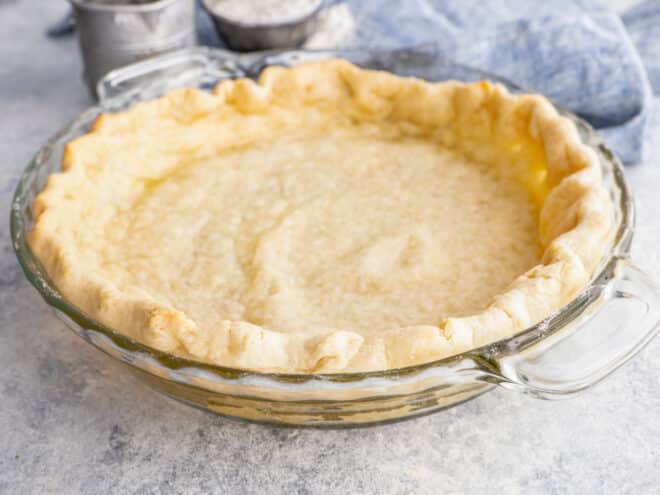
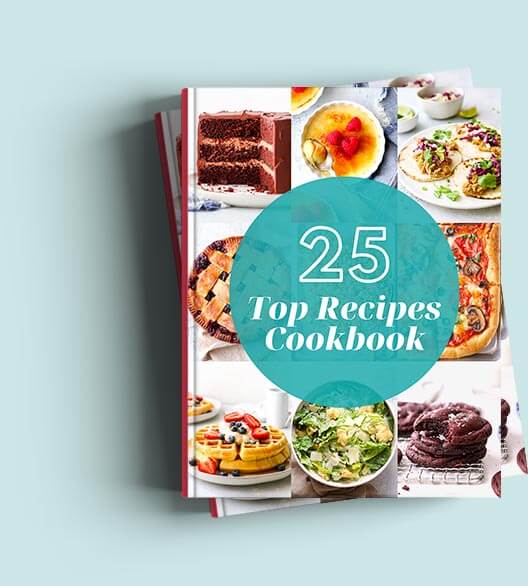
Baking blind is one of the best things for perfect crust every time! Thank you for giving detailed instructions here.
This looks like the perfect pie crust! Great guide 🙂
Thank you! I’ve tried blind baking crusts before and always ended up with weird, not baked things with melted butter oozing around. Except for that time I tried out a lard crust which basically disintegrated and lit the bottom of my oven on fire. While my husband was standing there to witness the whole disaster. Of course. But this way makes much more sense. I even read an article recently about using sugar as your pie weights, which doesn’t hurt the sugar at all and gradually toasts it the more times you use the same sugar. I was considering a Vidalia onion pie for an upcoming Christmas party and I think this makes me brave enough to try! Thanks!
I notice you use a glass (probably Pyrex) pie pan which I prefer also. But do you ever worry that going from freezer to hot oven will crack the glass?
I think that’s the beauty of pyrex? That it’s supposed to withstand temperature changes unlike regular glass? Either way, no I have never worried about it nor had a problem with it!
Lower rack? Middle rack? Where do you put the rack??
Unless otherwise stated, I always bake on a single rack in the middle of the oven. My second rack in then underneath in the bottom third, unused. If I absolutely have to bake on two racks at once I put them in the top and bottom thirds.
Thanks so much! I did make this crust and it’s the first time I ever made a pie crust without shrinkage 🙂 I love this method.
Yay! So happy to hear it worked for you.
In the beginning, it says to blind bake at 425 for 30 minutes. In the instructions it says to bake 20 minutes. Should I split the difference? ?
Also, what prevents the fluted edges of the crust from getting too brown if it’s blind baked earlier?
Thanks
Oops, thanks for catching my goof! I changed both places to now say 20-25 minutes, or until the edges are completely baked and golden brown. If the edges get too brown during the second baking, you can cover the edges with foil. To do this, measure out a piece of foil slightly larger than your pie. Fold in half and cut out a half circle (that will become a circle once unfolded) about 3-4 inches in diameter. Place over pie so that edges are covered. I hope this helps!
WOW! This looks gorgeous AND delicious!
Great info! I will visit your site Kalonkis xelosani more often for me to be updated. The idea I gather from here can’t be payed by money. Thanks a lot!
what temperature and how long do you bake an apple pie or any fruit pie?
I’d follow the instructions of the apple or fruit pie recipe you’re using. Hope this helps!
Thanks a lot! This crust was actually made by me, and it was the first pie crust I’ve ever made without shrinkage. I adore this approach.
I’m not good at cooking, but I wanna do something for my grandma. That’s sweet.